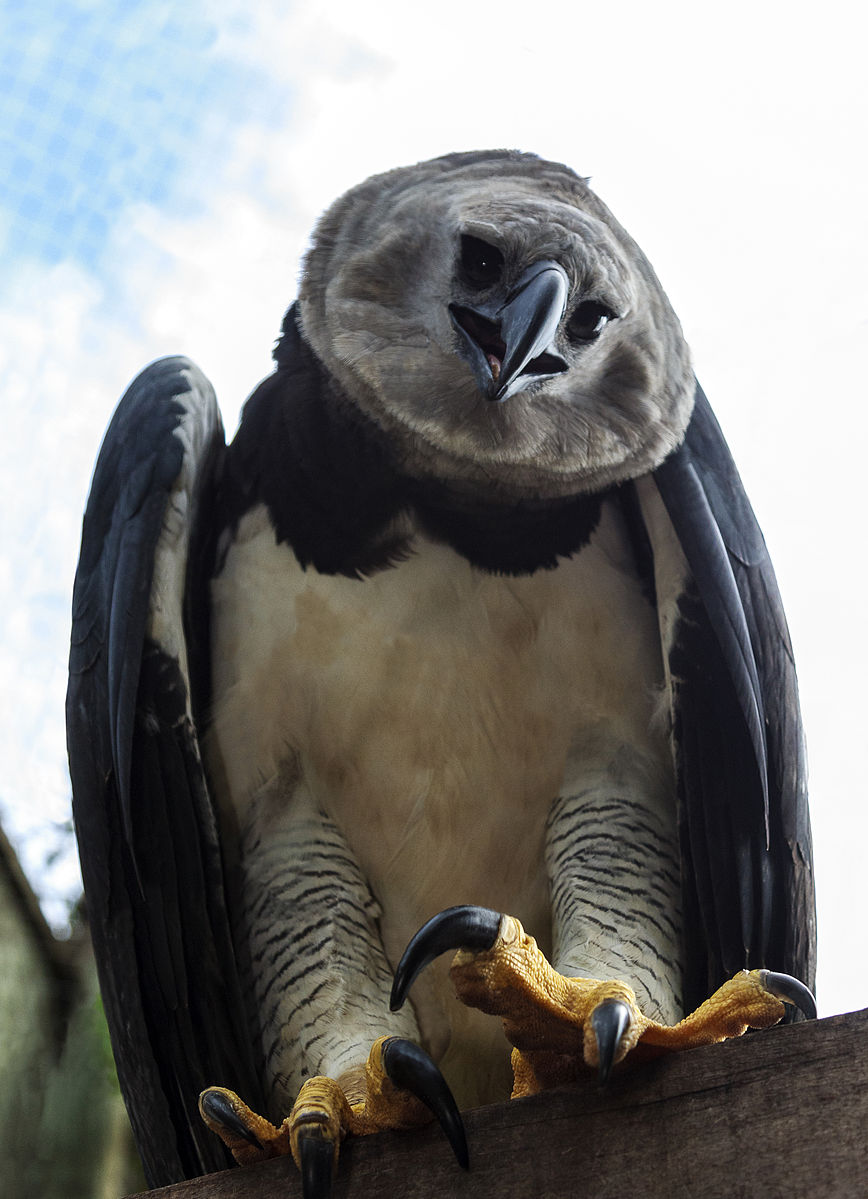The Harpy Eagle (Harpia harpyja) is a magnificent bird of prey found in the tropical lowland rainforests of Central and South America. As an apex predator, the Harpy Eagle’s life cycle is a fascinating study of its reproduction, growth, and development within its natural habitat.
Reproduction: The Mating Rituals of the Harpy Eagle
Harpy Eagles form monogamous pairs that mate for life, reaching sexual maturity at 4-5 years of age. The breeding season typically coincides with the start of the rainy season, usually in April or May. During courtship, the pair mates multiple times over a few days, but the female only lays two eggs. Due to siblicide, where the firstborn chick is fed and the second perishes from starvation, only one offspring is raised, ensuring the survival of at least one chick.
Nesting and Incubation: Building a Sturdy Home
 Image source: Águia Harpia – Harpy Eagle by Jonathan Wilkins
Image source: Águia Harpia – Harpy Eagle by Jonathan Wilkins
Harpy Eagles construct large nests, measuring 1.2 m thick and 1.5 m across, in tall trees, 27-43 m above the ground. These impressive structures are woven with sticks and lined with soft vegetation and animal fur, and are reused by the breeding pair every year. The incubation period lasts for an average of 56 days, with both parents taking turns incubating the egg, though the female performs most of the duty while the male searches for food.
Chick Development: Parental Care and Nurturing
Newly hatched Harpy Eagle chicks are altricial, meaning they are helpless with downy feathers and open eyes. The parents actively tend to the young for 10 months, which is several months after the chick fledges at 6 or 7 months old. The parents feed the juvenile once every few days, and the juvenile remains mostly inactive during this time. Juveniles often stay near their parents for at least a year, occasionally begging for food.
Growth and Dispersal: Reaching Adulthood
At five months, the chick develops its coat of feathers and fledges, becoming capable of flight. However, it continues to return to the nest for free meals from its parents for several months. At 4-6 years old, the eagle reaches sexual maturity and is ready to produce its own offspring, continuing the cycle of life for this magnificent bird.
Conservation Status: Protecting the Harpy Eagle
The Harpy Eagle is currently labeled as Near Threatened by the IUCN due to habitat loss from deforestation caused by agriculture, cattle raising, and logging, particularly in its northern territories such as Panama. Conservation efforts are crucial to protect this magnificent bird and its habitat, ensuring the survival of the Harpy Eagle for future generations to admire and study.
References:
– Harpy Eagle – San Diego Zoo Animals & Plants
– Harpy Eagle | The Peregrine Fund
– Harpy Eagle | World Rainforests
– Harpia harpyja: INFORMATION – Animal Diversity Web
– Harpy Eagle (Harpia harpyja) | about animals


